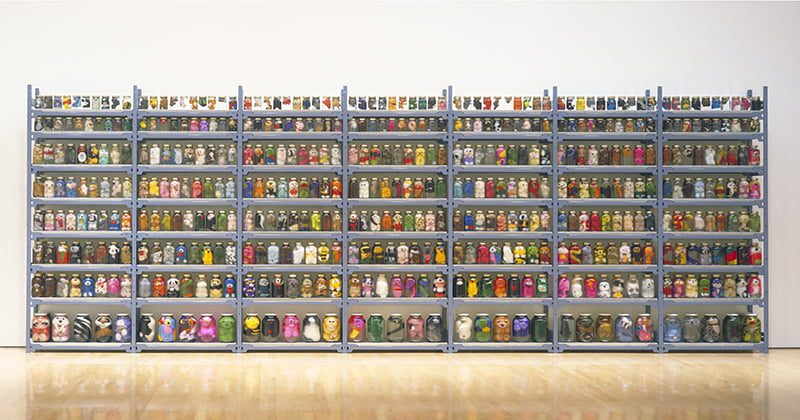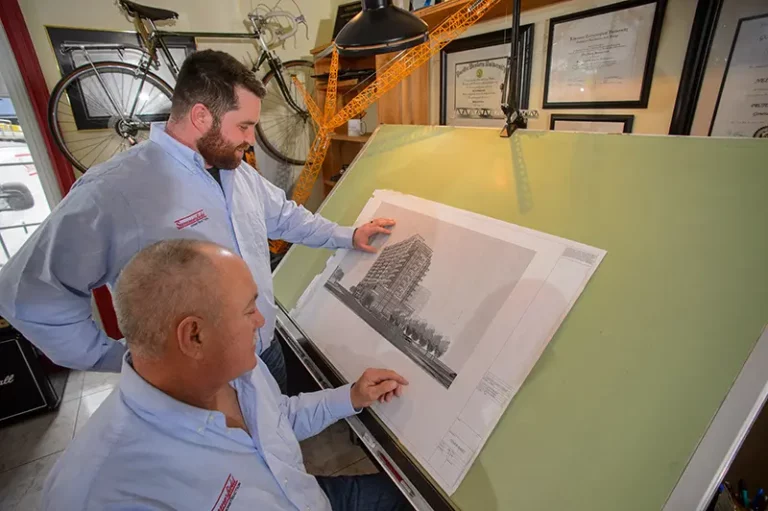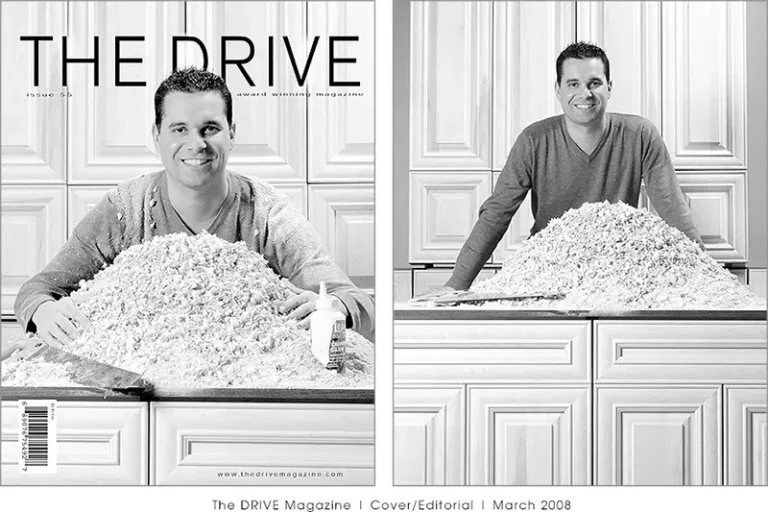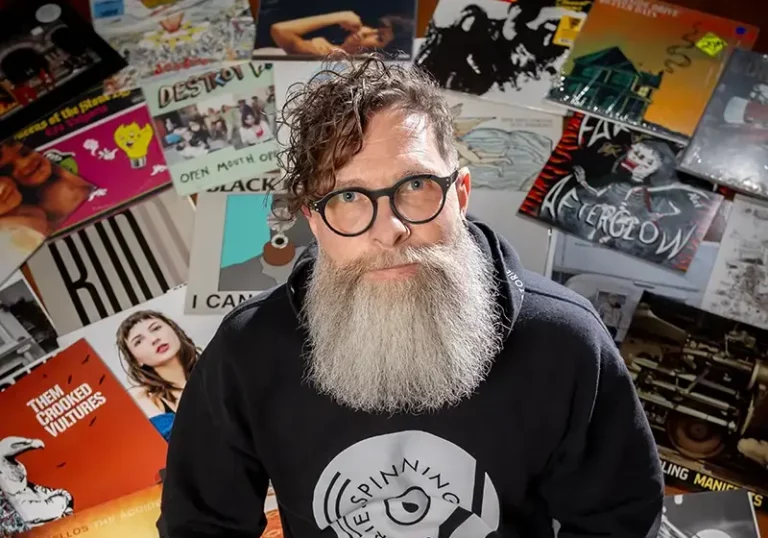IAIN BAXTER& dwells in the fifth dimension. His vision of the world is that of a telescope focused on the eyepiece of another telescope. Since 1958, he has shared what he sees through his art.
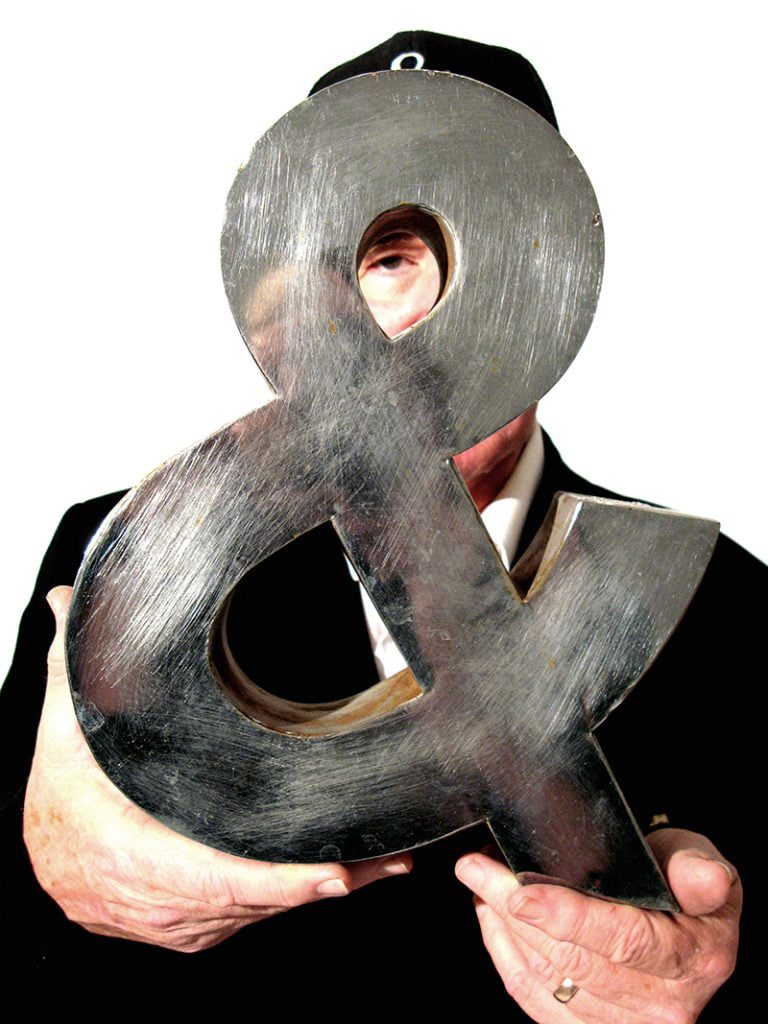
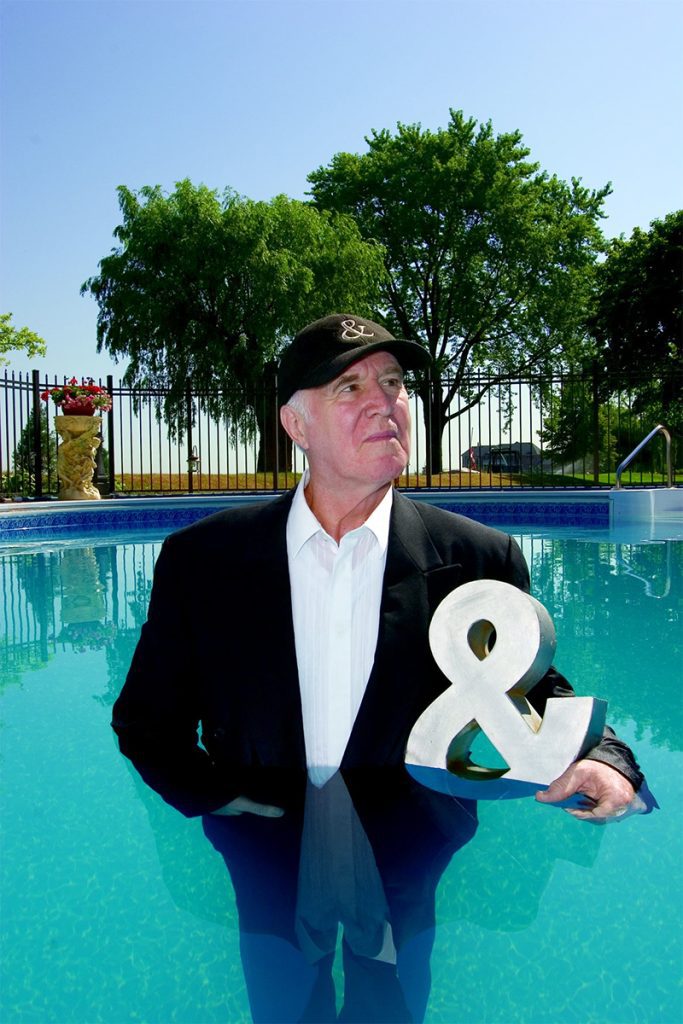
“Iain Baxter” was born in Middlesbrough, England in 1936—he legally changed his name to IAIN BAXTER& in 2005. His family immigrated to Canada the year after his birth, settling in Calgary. After earning a degree in zoology at the University of Idaho, IAIN and his pregnant wife moved to Japan in 1961 where he studied art and aesthetics. The first exhibition of his work took place in Kyoto, showing large Japanese screens he created on which he painted abstract images.
“I entered the art world through the back door,” IAIN explains. “I didn’t attend art school.”
In 1964, he earned a Master’s Degree in Education. Teaching provided the financial stability that allowed him to create art. IAIN’s first post as teacher was at the University of British Columbia. Among his neighbours was a young David Suzuki.
“Having no formal art background,” IAIN continues, “I learned along with my students. I gave fun projects. For one, I said: ‘Go find the center of the city and make a piece of art on that spot or about that spot. Take photos.”
Another assignment asked students to find a suitcase or briefcase and make a piece of art using that.
“One student came in with a cooler,” IAIN recalls. “From that she took out a frozen briefcase. I asked her what it was. She said: ‘That’s my soup case!’” A look of utter astonishment comes over IAIN’s face, all these years later, and he says: “That blew my mind!”
It wasn’t long before IAIN, himself, became a master of blowing people’s minds. This is where the tidy bounds of chronology are replaced by an unending stream of his ideas and work: In 1992, IAIN filmed an entire driving trip across the Trans Canada Highway, creating a 110 hour movie titled “One Canada Movie.” In the late 1960s, IAIN created his own company called N.E. Thing. For a 1969 exhibit at the National Gallery of Canada in Ottawa, he set up his area to resemble a modern office. More than a few patrons entered the installation and inquired where they could find IAIN’s exhibit—not realizing they were standing in the middle of it. Another project had people play the board game Monopoly with actual money.
“In the 1960s, I was traveling somewhere in the United States and pulled into a service station,” IAIN recalls. “There I saw a large vacuumed-formed plastic spark plug in an advertisement on the wall. That got me working in plastics. I vacuum-formed a carrot, a paint brush, all kinds of things. I used plastic to create inflatable clouds.”
Among his influences, IAIN counts American artist Gaylen C. Hansen who was his instructor for one of the few art courses he took. “He did his thing, and he let me do my thing,” IAIN says. “That’s how I tried to teach.”
He continues: “I also fell in love with Giorgio Morandi, an Italian artist who continuously rearranged a group of bottles in his home, which he painted. And of course, Marshall McLuhan was also a major influence.”
IAIN does not restrict himself to any single medium. In another exhibit in the Banff School of Fine Arts, 1987, IAIN filled a wall with a few hundred slices of Wonder Bread and cut out the silhouettes of three figures: a father, mother, and child, depicting their shadows on the floor before them in toast. “I called it ‘Food for Thought.’ It was a comment on the processed junk that people eat,” IAIN says.
An exhibit that took place at the Art Gallery of Windsor in 1996, titled “Animal Preserve,” saw IAIN place brightly coloured toy animals “pickled” in Mason jars filled with distilled water. “Here the artist gives us a playful reminder of how these toys represent endangered animals deserving our careful consideration,” one observer wrote.
IAIN has lived with his wife Louise Chance-BAXTER& in Windsor since 1988, teaching art at the University of Windsor until 2002. He has taken and published numerous photographs from around the city. Among them is the street sign for Dot in west Windsor.
In 2005, he legally changed his name to IAIN BAXTER&. The ampersand signifies the notion “There is always something else,” IAIN says. He has created a series of sculptural works using the ampersand, including “And,” a 10-foot inflatable silver version in 2008.
His work has been displayed in the Louvre in Paris, the National Gallery of Canada, the Art Gallery of Windsor, and countless other galleries and spaces around the world.
In 1983-84, IAIN worked at Labatt’s as a creative consultant— “A sort of iconoclastic court jester,” he recalls—advising the C suite about how to engage with the public.
IAIN’s awards and honours include: 2003: Officer of the Order of Canada, 2004: Governor General’s Award in Visual and Media Arts, 2019: Companion of the Order of Canada.
Many of IAIN’s ideas vault over whatever boundary exists between art and marketing. One in particular could be a boon for the City of Windsor.
“Windsor is one of the few places in the world that has section called ‘Sandwich,’” IAIN explains. “We should have a sandwich festival every year, bringing in sandwich makers from all over the world. There could be prizes for Best European Sandwich, Best South American Sandwich, Best Asian Sandwich, and so forth. We could showcase wines from this region at the same festival. I have no idea why the people in charge of the city aren’t doing this now!”
He enjoys the slogan “Art is all over” because it can be taken to mean “art is finished,” or that “art is everywhere.” IAIN always leaves the interpretation to the observer.
Far from being the mythic “tortured artist,” IAIN maintains a playful, humourous aspect to his work. “I’m having a great!” he says.
